
Valerie Wynn holding a Mono Viuda (“Widow Monkey” from its sad face) at the Tumeremo, Venezuela TECMIN field camp. Look inside here: https://www.amazon.com/Bushmasters-Machetes-Mosquitos-Venezuelan-Jungle/dp/1699503397/ref=sr_1_1?crid=1JQKGNPKNSYB3&keywords=Bushmasters%2C+machetes&qid=1704840302&s=books&sprefix=bushmasters%2C+machetes%2Cstripbooks%2C153&sr=1-1
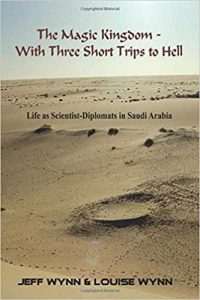
BOOK DETAILS
Bushmasters, Machetes, and Mosquitos – Life, Death, and Gold in the Venezuelan Jungle
The southern Half of Venezuela is comparable in size to Austria, but is almost entirely covered by jungle – the northern reach of the Great Amazonas forest. Forestry experts estimate there are 2,500 different species of trees alone! This meant that virtually the entire southern half of the country, covered with impenetrable jungle, is accessible only by helicopters and huge dugout canoes called Bongos. The US Geological Survey was invited in by the Venezuelan government – before Hugo Chavez came on the scene – to map this vast region. We also completed an informed mineral resources assessment that to no one’s real surprise showed that the Amazonas of Venezuela is richly endowed with gold, diamonds, iron, and bauxite. We were not really surprised at the gold endowment, however, because in 1906 the largest gold mine in the world was found in El Callao in central Bolivar State. It’s name? Lo Increible – the Incredible One. We also found a gargantuan structure in the southern cloud forest, mistakenly named “Cerro Impacto” that is over 10 km in diameter. It is a carbonatite, an ancient eruption of crustal carbon loaded with Uranium, Thorium – and Rare-Earth Elements.
The chance to explore this ancient jungle led the authors to move with their five children and live on its edge for three years. Jeff was the USGS Mission Chief – Jefe del Grupo Asesor. Death was always close while we were there – we knew too many people who died while we were there or shortly after we left. To assemble this book, Jeff reviewed old journal entries and noted that “I was almost killed again today” appears on average once every 7 – 9 days over that three-year span. These threats include cerebral malaria, killer bees, army ants, incurable horrors like Chagas Disease, 4-meter-long crocodiles, four species of Piranha, deadly snakes including the Cuaima Piña/Bushmaster… and murderous bandits.
But the Venezuelan people compensated for them all. Despite the near-presence of death everywhere and all the time, they are the most vibrant, happy, and incredibly generous people on the planet. They are the ones who saved us.
~~~~~
The Magic Kingdom – With Three Short Trips to Hell
Saudi Arabia is blessed with huge hydrocarbon deposits, and is the source of most of the gold of King Solomon. “The Magic Kingdom” is a term used for Saudi Arabia by ex-patriot western visitors, and refers to a different form of logic, what we called local logic for lack of a better word. It meant that my first task as a male scientist-diplomat was to find a gilded cage for my wife and daughters, as they could never drive or even travel except with male family supervision. I had one spectacular failure here – when we learned that a month was not a month … when it was a lunar month on a visa. My next task upon arrival was to identify the spies assigned to watch and report on me. Then use them.
The ‘Rub al-Khali, or Empty Quarter, is a terrifying wonderland, the largest contiguous sand-dune desert on Earth. It is logistically easier to cross Antarctica than the Empty Quarter, because neither fixed-wing nor rotary aircraft can venture into this forbidding wilderness. If you enter it, you are very much on your own. Here the humidity is typically just two percent – barely measurable – and the temperature during our first expedition reached 61 C/142 F. Getting to the Wabar Asteroid Impact site, where a detonation the size of the Hiroshima Bomb took place in 1863, was an amazing experience by itself. What happened here would have been phenomenal to watch, but you would not have survived the rain of molten glass that followed. Traveling there required truly formidable logistics, plus the assistance of an amazing, “sky-to-earth” tracker from the famous al-Murrah tribe. Ali al-Murrah typified the incredible kindness and legendary generosity of the Saudi people, a people who have raised hospitality to levels not found elsewhere on Earth.
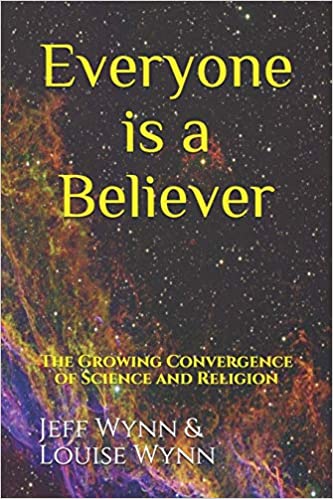
Everyone is a Believer – The Growing Convergence of Science and Religion
This book is aimed at people who subscribe to science as a path to truth, whether or not they subscribe to a faith tradition. It is also aimed at people who are religious – and refuse to accept the false dichotomy that science and religion are mutually exclusive. We show that it is not only possible to be a scientist and a believer in God – but that you can’t honestly separate the two. We show how science and religion both start with unprovable fundamental assumptions; and show how science and religion depend heavily on inspiration – and both require faith. We believe that true religion holds in common with good science the ability – the requirement – that it can be tested. We note that in both religious and scientific spheres most knowledge is acquired by indirect means.
We separate science from technology, with which it is often conflated, and from bad statistics, from pseudoscience, and from how science is often reported in the popular press – and we give you the tools to do this yourself. We also point out the crucial contributions from philosophy and history that enforce honesty in modern scientific research.
We examine the very human flaws of scientism, and discuss how blindered science and blindered religion (closed-mindedness and “cherry-picking”) are equally self-crippling approaches to the truth. We do NOT try to “prove” scientifically that God exists or that a particular religion is true – science doesn’t have the tools for this. Nevertheless, we review some startling hints, including things unknown in 1830 when the Book of Mormon was published, such as the Frankincense Trail, Uto-Aztecan linguistic links to central Arabia, and volcano-tectonic events in Central America, among others. We even identify a likely “smoking gun” for 3 Nephi 8. Recent discoveries in cosmology – information already available in a hymn written in 1835 – show how rare (but not unique) are the chances for life as we know it elsewhere in the universe, along with the implications.
~~~~~
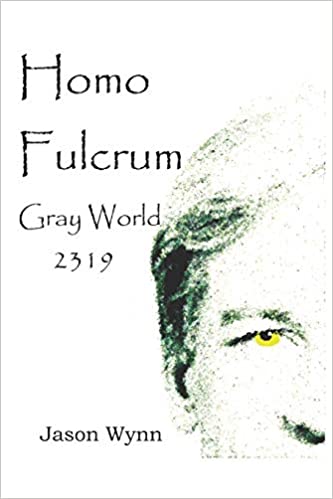
Look inside here: https://www.amazon.com/Homo-Fulcrum-Gray-World-2319/dp/1702431460/ref=sr_1_11?dchild=1&keywords=Jason+Wynn&qid=1605235540&sr=8-11
Homo Fulcrum – Gray World, 2319 (Book #1, Fulcrum Series)
Homo Fulcrum is set in a post-asteroid-impact Apocalyptic Earth nearly 300 years in the future, where the dust, soot, and winds from a massive asteroid impact have transformed our familiar Blue Marble Earth into the Gray World, a dreary wasteland. The relatively few survivors have only recently begun to venture out of long-sealed Dome Cities ruled by the TechDominion, a rigid, caste-system police state. A predatory ruling caste called the Grays has evolved, and lives off the remaining population who “donate” organs to extend the lives of these oligarchs. “Life is Sacred, Nothing is Wasted,” became the mantra – and the justification.
One man chooses to fight these murderous oligarchs, also called the Eaters of Souls for their social predation. Captured twice, he escapes from an ultra-secure asteroid prison with help from a daughter he last saw when she was just three years old. She is now an adult, but also a deadly killer who has learned that leaving the enemy alive can be by far the greater punishment… She has also never forgotten her Papa, who she is determined to find no matter who she must run over to do it.
But her father is different: his golden eyes are just the most superficial distinguishing characteristic of Homo Fulcrum, the cusp of the newest hominid species on Earth that threatens the TechDominion’s very existence. They focus all their immense resources on capturing and killing him. To them, he is… The Alien.
But they completely overlooked his daughter.
~~~~~
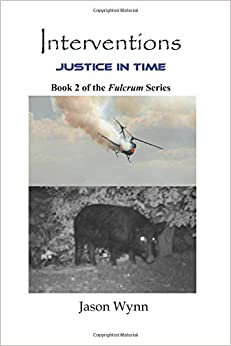
Interventions – Justice in Time (Book #2 of the Fulcrum Series)
People have “just disappeared” throughout recorded history. Usually the cause is a wilderness accident… or it could be “murder most foul” to quote Shakespeare’s Hamlet, and eventually a perp may be caught and punished. However, there are cases where a person entered a room with no exit, and… just never reappeared. Or they went to bed one night and the bed was untouched the next morning. Could there be something else happening here?
What about injustice? Again, it pervades all recorded history. Rameses the Great badly lost the Battle of Kadesh and survived only by sacrificing his personal Ra troops. Yet his monuments say that he won that battle. And fathered at least 48 sons. At all scales, evil people have raped and murdered innocents. Believers in a faith tradition generally accept that punishment will be meted out by God, Allah, perhaps reincarnation to a lesser state… because history sure looks like terrible people (the 4% of humankind who are sociopaths) have gotten away with impunity.
Finally, there are known critical points in history, events or even moments that have had vast and lasting effects on the future. The premature death of Alexander Hamilton comes to mind here.
However, what if future historians – living on Mars as part of mankind’s first step to another solar system – and with deep technical capabilities, could go back in time and ensure that certain things were “taken care of?” To ensure that their own ancestors survived the Argentine “Dirty War” or the war of Welsh independence, perhaps, or ensure that another critical individual didn’t just “disappear” before mankind launches out into the Galaxy…
The stories here fit in real historical contexts, where justice was meted out in this life…
Justice from the future – justice in time. 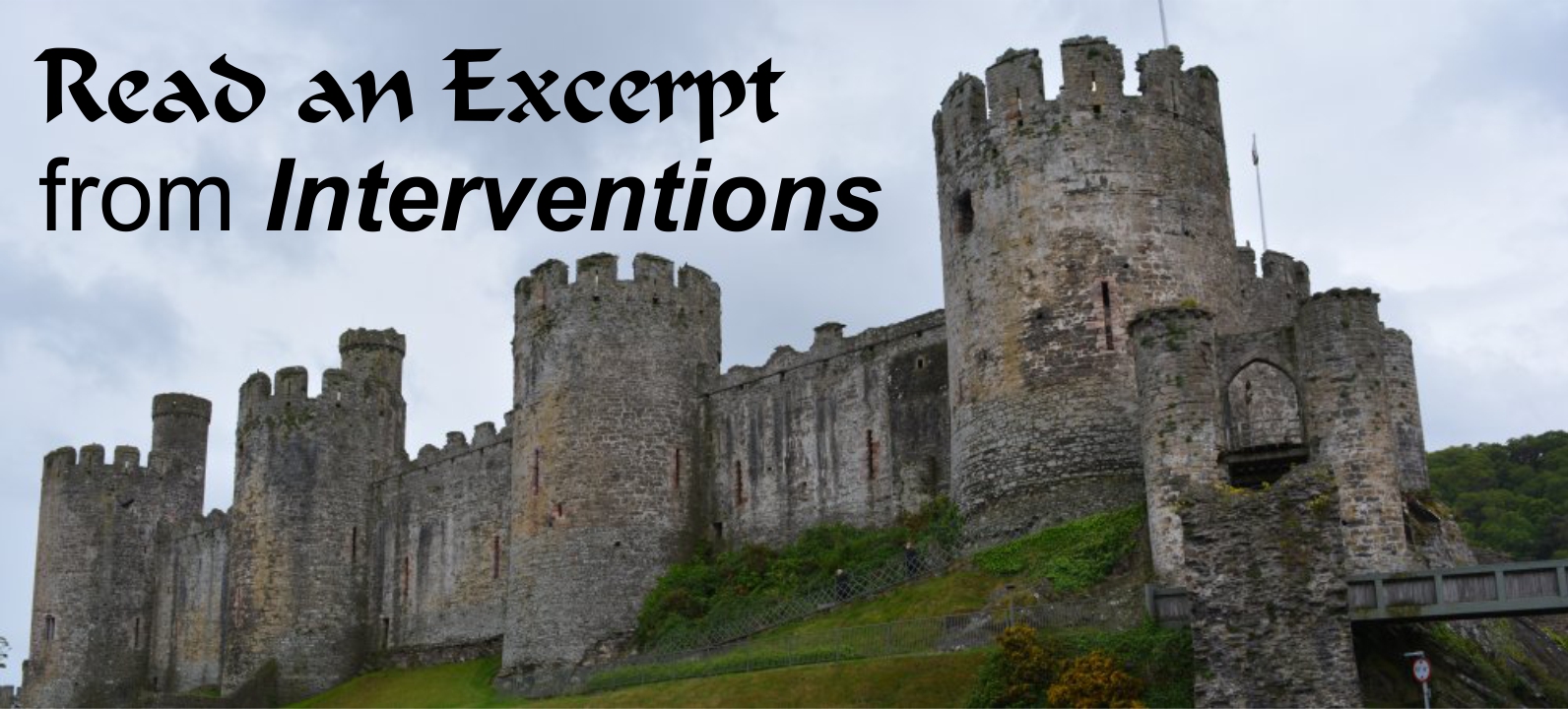
~~~~~
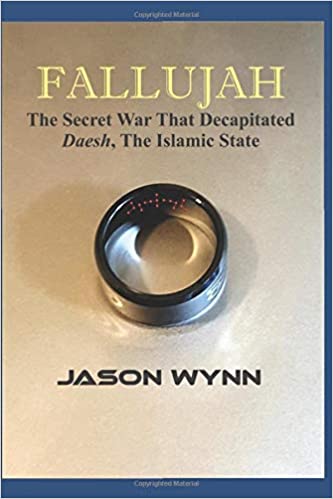
Look inside here: https://www.amazon.com/Fallujah-Secret-Decapitated-Daesh-Islamic/dp/1973250586/ref=sr_1_7?dchild=1&keywords=Jason+Wynn&qid=1605235585&sr=8-7
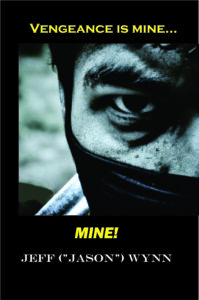
Book Cover generated by AI (Dall-E)
https://www.amazon.com/Vengeance-mine-MINE-quicker-justice/
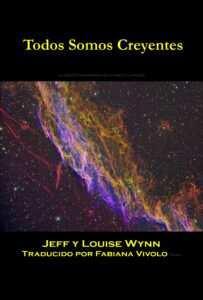
Imagen de portada: La nebulosa del velo (NGC 6992) –
Telescopio Mauna Kea, Hawái, Canadá-Francia-Hawái
https://www.amazon.com/Todos-Somos-Creyentes-creciente-convergencia/
Fallujah – The Secret War that Decapitated Daesh, The Islamic State
The Islamic State exploded into the world’s consciousness during the Syrian civil war in the early 21st Century. It has been variously called IS, ISIS, ISIL, and Daesh – this latter an unflattering acronym hated by its leaders. By 2014 Daesh had announced a “Caliphate” and had attracted many disaffected young men from all over the world. It had driven – actually scared – the Iraqi army out of Mosul. Daesh then proceeded to loot the banks, and capture almost the entire nearby non-Muslim Yazidi population. The Yazidi men were killed, and the women and girls were forced into sexual slavery in the name of Islam. Internet videos of gruesome beheadings of Christians, Shi’a, Syrians, Iraqis, and Europeans became a crude means to terrify and subdue the local population. By 2015, ISIS had reached the outskirts of Baghdad, and ruled a territory the size of Ireland. At that point a coalition of international forces, Muslim and non-Muslim, banded together and slowly uprooted Daesh and obliterated their “Caliphate.” The overt military aspects of this reversal are well-documented, but there is another story that is often overlooked. This is the story of the secret war that decapitated the Daesh leadership.
In this war, the Superheroes were women.
~~~~~
Vengeance is mine. MINE!
There is a universal, instinctive human desire for justice. If you do bad things to me and mine, you should be punished… in this life, or if necessary, in the next. The intent of vengeance, a sub-set of justice, is to minimize family/tribal injury by way of a savage consequential warning – justice in the short term.
Vengeance, vendetta, and revenge all have the same root in the Latin verb vindicāre, meaning “to protect,” “to avenge,” or “to punish.” They are a manifestation of this deep human need for justice… however, justice intended for this world. The Dresden bombing can be traced back to the London Blitz. The Roman soldier gang rapes of Boudica’s daughters inevitably led to the massacre at Londinium.
Justice often cannot be served in this world, so the thirst for it extends to hope in the afterlife. Hence the persistence of Voodoo, Dante’s “Inferno” – and the disinterment, decapitation, and burning two centuries after his death of the Inquisition’s Torquemada.
Sometimes vengeance has been used pre-emptively: corpses impaled on poles in the path of armies approaching Dracula’s Castle Bran, for instance, or human heads on stakes awaiting the arrival of the Mongol army at the castle of the Assassins in Alamut.
This book explores vengeance in all its aspects. It includes real stories of vengeance, along with lightly fictionalized stories (to preserve privacy) based closely on real events. It explains why vengeance is such a universal human characteristic: a practical solution for individuals or tribes to ensure stability, fairness… and justice.
Somewhen.
~~~~~
Todos Somos Creyentes
Este libro está diseñado para esas personas, científicas y religiosas, que se niegan a aceptar la falsa dicotomía entre la ciencia y la religión. Es posible ser científico y creyente en Dios, y de hecho no se pueden separar los dos. La ciencia, como la religión, comienza con supuestos fundamentales no demostrables; la ciencia y la religión depende en gran medida de la inspiración; y ambas requieren fe. La verdadera religión tiene en común con la buena ciencia la capacidad –el requisito– de que pueda ser probada. Tanto en la esfera religiosa como en la científica, la mayor parte del conocimiento se adquiere por medios indirectos.
Separamos la ciencia de la tecnología, con la que a veces se la confunde, y de las malas estadísticas, y de la pseudociencia. Examinamos los defectos del cientificismo y discutimos cómo la mentalidad cerrada y la selección selectiva son igualmente auto paralizantes. No intentamos “probar” científicamente que Dios
existe o que una religión en particular es verdadera. Por diseño no sea posible.
Sin embargo, revisamos algunos indicios sorprendentes, incluidas cosas desconocidas en 1830 cuando se publicó el Libro de Mormón, tal como el Camino del Incienso, descubrimientos lingüísticos conectando la península arábiga con Centroamérica, más eventos vulcano-tectónicos en Centroamérica, y descubrimientos cosmológicos que muestran las posibilidades de la vida como nuestra en otras partes del universo.
Todas estos hechos y ideas, y muchas otros, contribuyen a la creciente evidencia de que la ciencia y la religión están convergiendo rápidamente en una verdad más amplia. Una Verdad inmutable con “V” mayúscula.
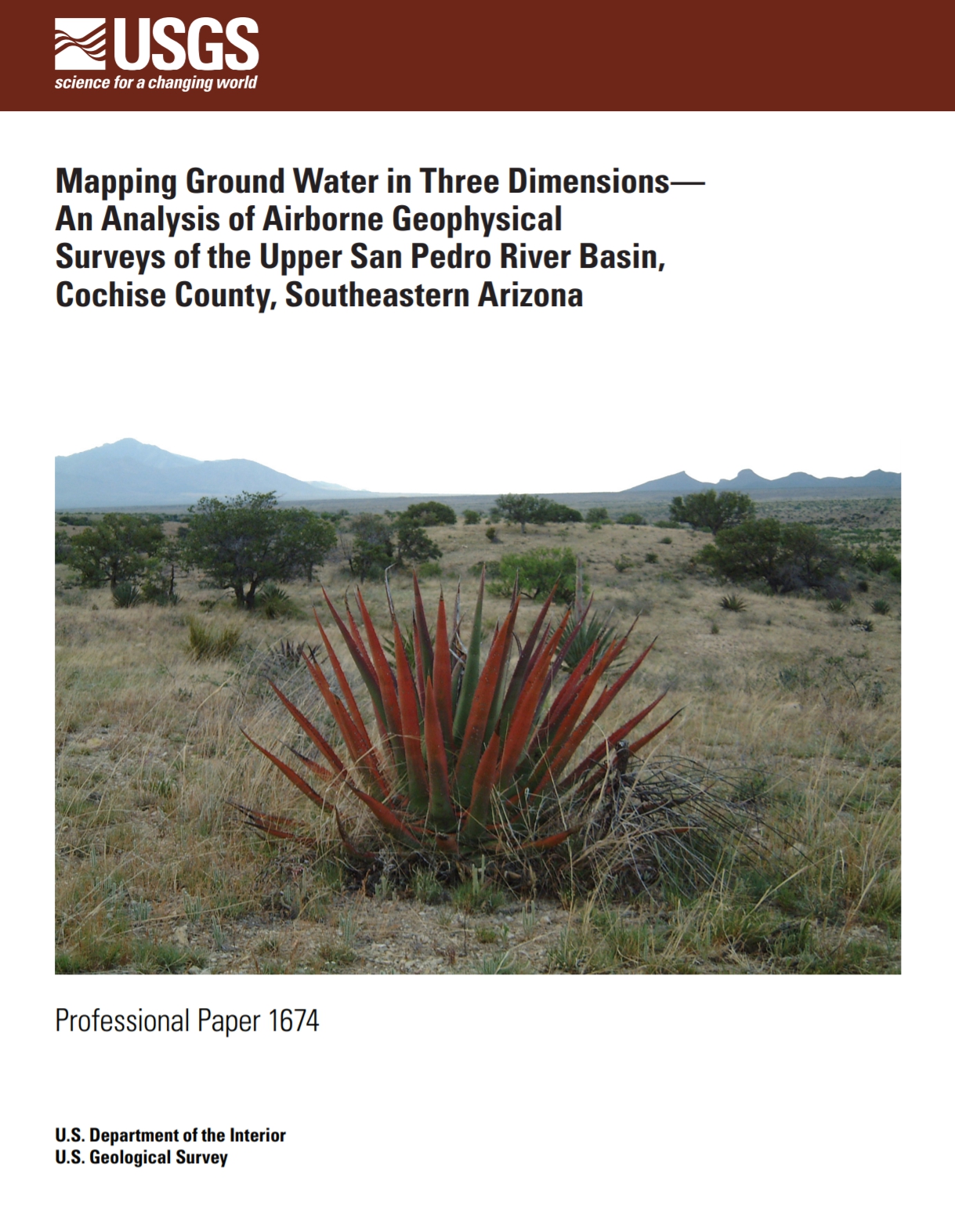
Mapping Ground Water in Three Dimensions— An Analysis of Airborne Geophysical Surveys of the Upper San Pedro River Basin, Cochise County, Southeastern Arizona
This book-length report summarizes the results of airborne geophysical surveys conducted in the upper San Pedro Valley of southeastern Arizona. The combined surveys cover about 1,000 square kilometers, and extend from the Huachuca Mountains on the west to the Mule Mountains and Tombstone Hills on the east, and from north of the Babocomari River to near the Mexican border on the south. The surveys included the acquisition of high-resolution magnetic data, which were used to map depth to the crystalline basement rocks underlying the water-filled sediments in the basin. The magnetic inversion results show a complex basement, with sediment thickness in the center of the valley ranging from ~237 meters beneath the city of Sierra Vista to ~1,500 meters beneath Huachuca City and the Palominas area near the Mexican border. The surveys also included acquisition of 60-channel time-domain electromagnetic (EM) data. Extensive quality analyses of these data, including inversion to conductivity vs. depth (conductivity-depth-transform or CDT) profiles and comparisons with electrical well logs, show that the electrical conductor mapped represents the subsurface water-bearing sediments throughout most of the basin. Plates 1 and 2 thus show the precise location of the groundwater in three dimensions.
~~~~~
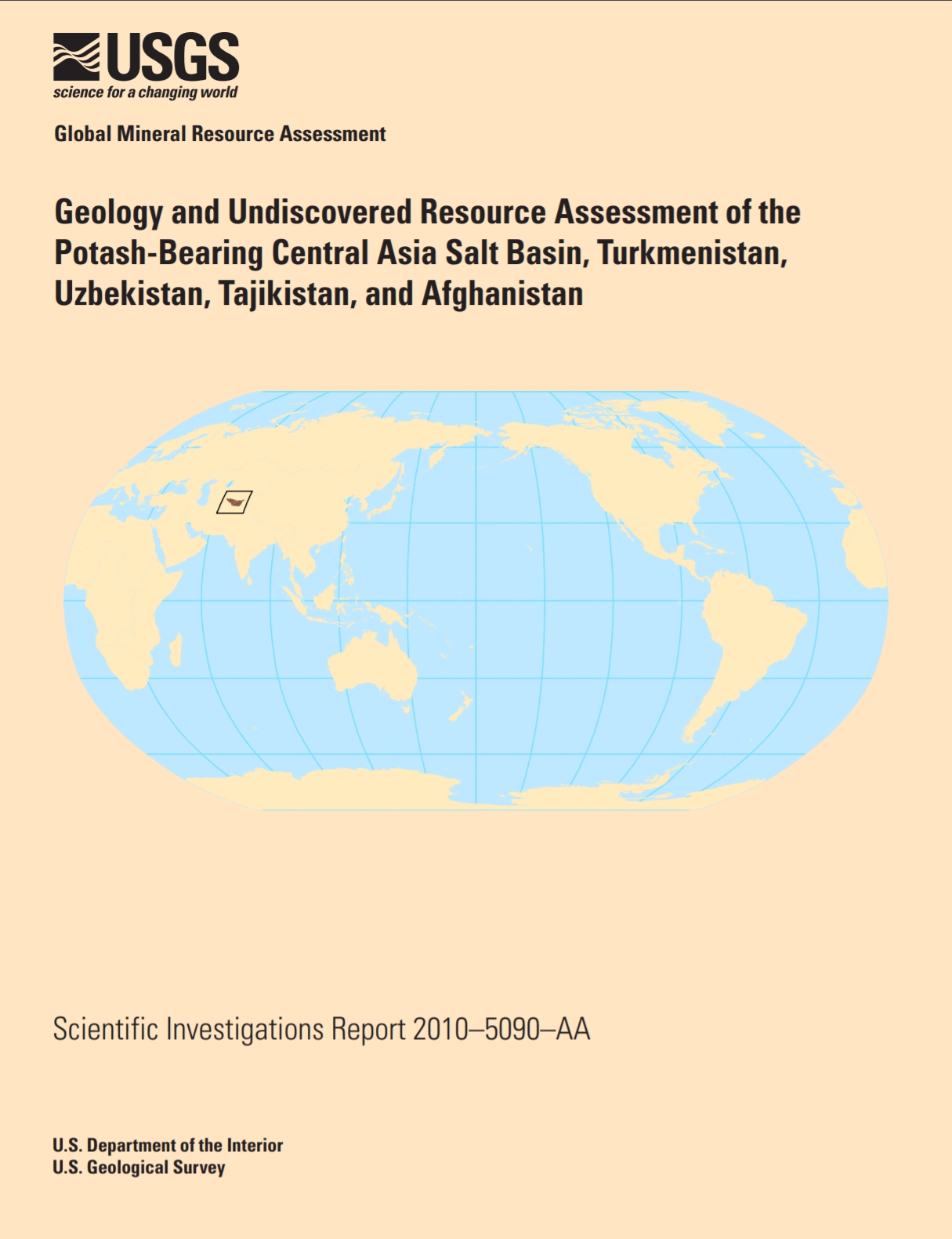
Geology and undiscovered resource assessment of the potash-bearing Central Asia Salt Basin, Turkmenistan, Uzbekistan, Tajikistan, and Afghanistan
Undiscovered potash resources in the Central Asia Salt Basin (CASB) of Turkmenistan, Uzbekistan, Tajikistan, and Afghanistan were assessed as part of a global mineral resource assessment led by the U.S. Geological Survey (USGS). The term “potash” refers to potassium-bearing, water-soluble salts derived from evaporite basins, where seawater dried up and precipitated various salt compounds; the word for the element “potassium” is derived from potash. Potash is produced worldwide at amounts exceeding 30 million metric tons per year, mostly for use in fertilizers – the source of the “Green Revolution” of the 20th Century. The term “potash” is used by industry to refer to potassium chloride, as well as potassium in sulfate, nitrate, and oxide forms. For the purposes of this assessment, the term “potash” refers to potassium ores and minerals and potash ore grades. Resource and production values are usually expressed by industry in terms of K2O (potassium oxide) or muriate of potash (KCl, potassium chloride). The CASB hosts significant discovered potash resources that originated in an inland sea during Late Jurassic time. Seawater flowed into the CASB, mostly from its extreme northwestern margin near the modern Caspian Sea, during several evaporation episodes that deposited at least five different packages of evaporites, with virtually all potash in the second and fourth packages. The Amu Darya tract is estimated to contain 38 billion metric tons of undiscovered potash as K2O. The nearby hybrid stratabound-halokinetic Gissar tract is estimated to contain between 1 and 16 billion metric tons of undiscovered potash as K2O.
~~~~~
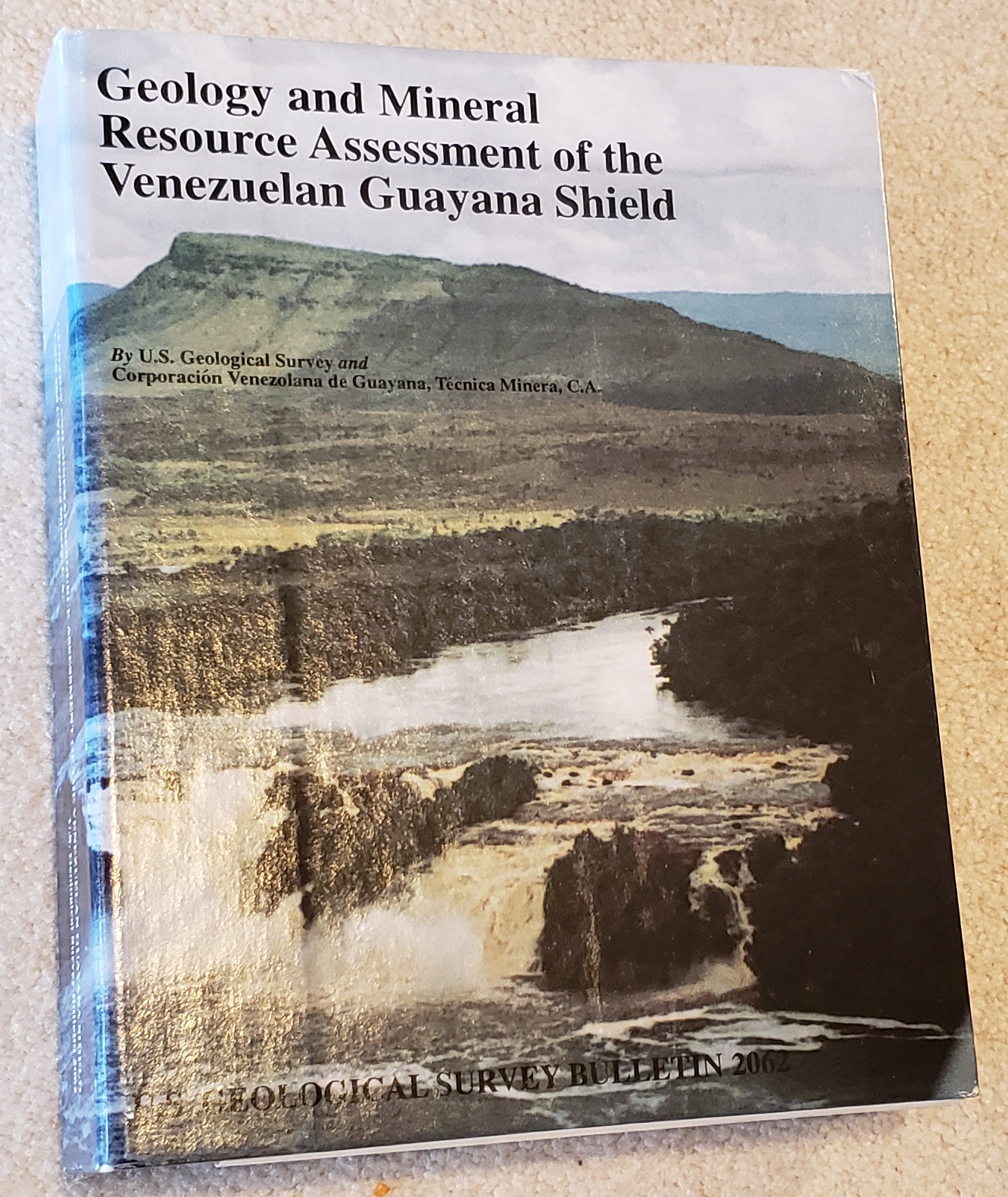
Geology and Mineral Resource Assessment of the Venezuelan Guayana Shield
The southern half of Venezuela is mostly jungle covered. The first road was paved – down its eastern side to Brazil – only the year before we arrived. Consequently, the only access to this vast region was by ill-maintained helicopters or huge dugout canoes called Bongos. With access so limited, we had to think hard about how we would even begin to gather data. Ultimately satellite imagery, regional geophysical data, Monte Carlo simulation, and extensive and laborious point-sampling opened the door to a region that is incredibly blessed with resources including but not limited to gold, diamonds, bauxite, iron, titanium, and rare-earth elements.
We arrived thinking that we would have to be careful about the poisonous snakes in the jungle. THAT turned out to be the most mild of the dangers we would face. Instead, we discovered that the most severe physical danger was less than a centimeter long: the Anopheles mosquito, vector of Falciparum Plasmodium – cerebral malaria. This was followed by four species of piranha and 4-meter crocodiles in the waters we traversed in dugout canoes – when we ascertained that we had a better chance of surviving an Entrada if we avoided helicopters flown by testosterone-poisoned pilots. These dangers were followed closely by murderous bandits living beyond the pale of the law, incurable Chagas Disease, killer bees (abejas asesinas), Army Ants (at night!), falling on your machete, and truck drivers who ignored ALL stop-signs… Somewhere near the bottom of the list could be found snakes – including the deadly Cuaima Piña (Bushmaster), the terrifying face-biting “Lora” and various species of fer-de-lance.
~~~~~
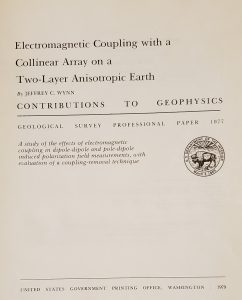
Wynn (1979). US Geological Survey Professional Paper 1077 – Electromagnetic coupling with a collinear array on a two-layer anisotropic earth. Link to full PDF here: https://www.academia.edu/55205484/Electromagnetic_coupling_with_a_collinear_array_on_a_two_layer_anisotropic_earth
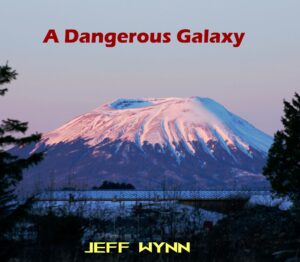
Wynn (2024). A Dangerous Galaxy.
Cover image: Edgecumbe Volcano, Kruzof Island, Alaska.
Coming Soon:
Electromagnetic Coupling with a Collinear Array on a Two-Layer Anisotropic Earth
The induced polarization method of geophysical prospecting has been in use since 1947 with varying degrees of success. Until the 1970’s, its two principal drawbacks were the inability to distinguish between anomalous rock responses, and to distinguish between these rock responses and inductive coupling. In order to solve the second problem, it is necessary to develop an understanding of the nature of inductive coupling. This is done by examining electromagnetic inductive coupling behavior theoretically, using the boundary value equations, and experimentally, using field spectra from a broad range of geological environments.
Electromagnetic coupling can be separated into P, a purely inductive term and Q, a grounding or purely resistive term. The functional behavior of these terms from a theoretical standpoint leads to development of field electrode arrays that allow separation of the contributions of these parameters in the field; the result is a clearer understanding of the reflective contribution from a conductor and the effect of anisotropy. Two immediate results of this study were development of an ultra-low-frequency, deep sounding technique for highly conductive overburden environments, and a successful iterative technique for the removal of EM coupling from complex resistivity field data.
A Dangerous Galaxy (Book #3 of the Fulcrum Series)
Hahn and Maddie barely survived the vicious post-asteroid-impact TechDominion worldwide autocracy (described in Book 1, “Homo Fulcrum”), reuniting after years of prison with help from their daughter Amber… and began raising a family as ambassadors in the Galactic Alliance of Worlds. With five children now, they have decided to take their first family vacation. Yes, as Hahn said, that’s an oxymoron. As they visit several developed worlds, they encounter astonishing creatures, including water-world apex predators, a nuclear-wasteland-mutant ambush predator, and a sentient molecular-cloud monster that wants to “play” with them. Their oldest son begins a career as a time-agent, to make sure that certain critical historical events take place… such as ensuring that an ancestor of Winston Churchill is not killed before she can marry and have children. Here you will encounter a plausible history about what drove the sudden move to the S.T.A.R.T. nuclear negotiations with Russia – and it involves rats. However, their greatest existential danger comes when they try to return home to SE Alaska – and a human-brain-driven nuclear weapon targets them. How this plays out involves a supportive Orca pod.
This book includes plausible-physics explanations for faster-than-light spacecraft and time-travel. The astronomy, geography, geology, history, physics, and Jujitsu described are all technically accurate.
Ask-a-Geologist (378 pages, 115 figures – passed thru USGS Technical Review)
Smoking Mountain (Novel by Louise)